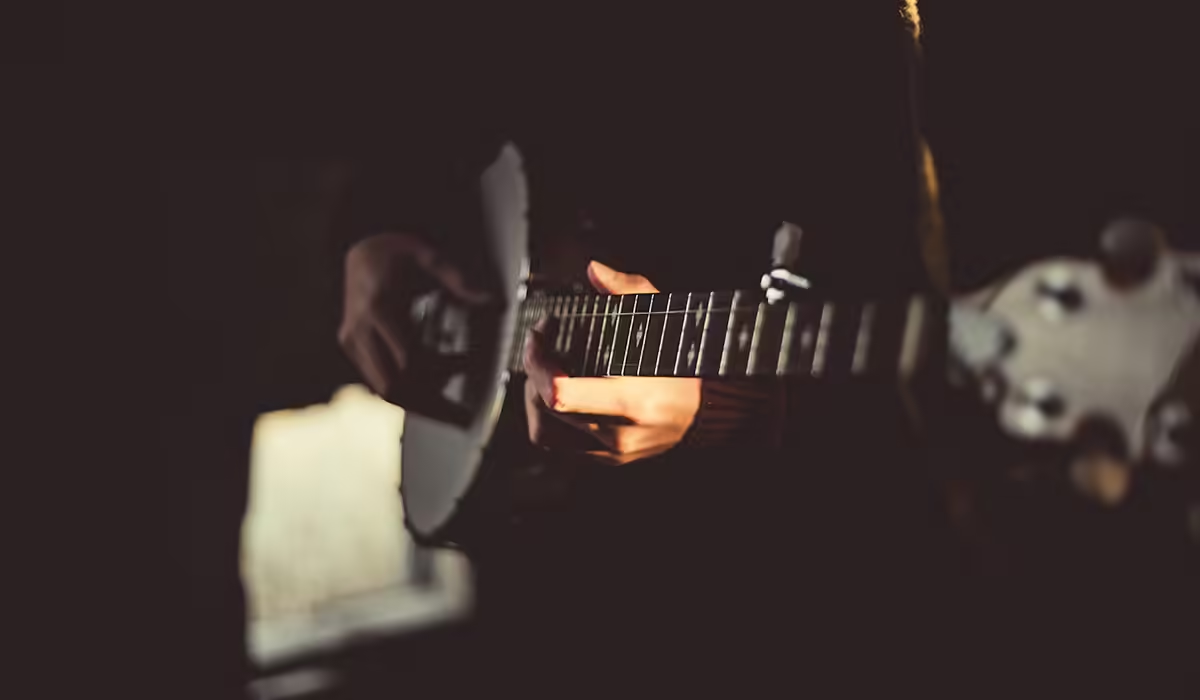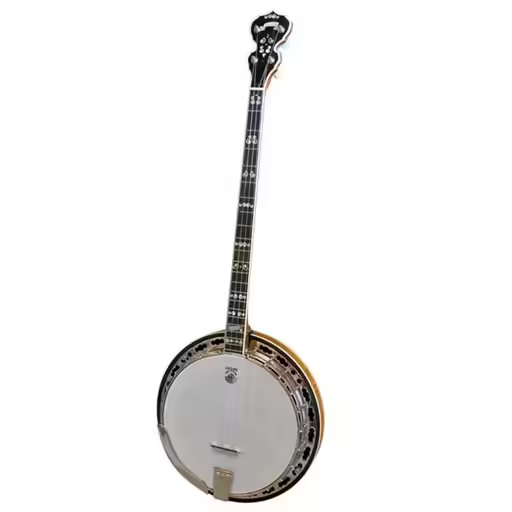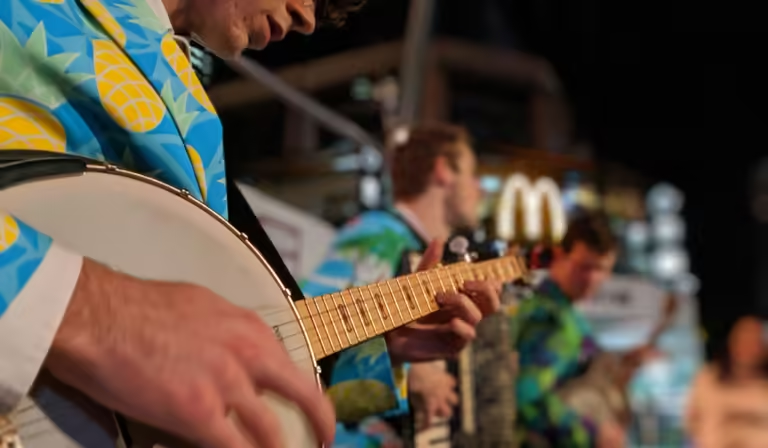The Different Types of Banjos (2025 Overview)
You may not know that there are a quite a few variations of banjos out there. The main types being: Plectrum Banjos, Five string Banjos, Guitar Banjos, Hybrid Banjos, String Banjos, Tenor Banjos, Banjo ukulele, Resonator Banjos, Mandolins, Fret Tenor Banjos.
The banjo has a rich history that dates back to African roots, although some may say it is predominantly an American sounding instrument. It has evolved over the years to become a popular instrument in various music genres. Understanding the different types of banjos is important for any player or enthusiast to appreciate the diversity and versatility of this unique instrument.
Table of Contents
Plectrum Banjos
Plectrum banjos are characterized by their four-string configuration and are often used in jazz and folk music. These banjos have a shorter neck compared to five-string banjos and are played with a guitar pick. Notable players of plectrum banjos include Eddie Peabody and Scotty Plummer.
- Plectrum banjos are known for their bright and crisp sound, making them ideal for genres like jazz where clarity and precision are essential.
- The shorter neck of plectrum banjos allows for easier chord shapes and faster playing, making them popular among soloists and accompanists alike.
- The use of a guitar pick on plectrum banjos results in a distinct attack and articulation, adding a unique texture to the music produced.
Five-string Banjos
Five-string banjos are the most common type of banjo and are widely used in bluegrass and country music. They feature a unique design with an extra short string that is played as a drone. Notable players of five-string banjos include Earl Scruggs and Bela Fleck.
- The fifth string on five-string banjos adds a distinctive twang to the sound, contributing to the characteristic bluegrass and country music quality.
- Five-string banjos are versatile instruments that can be played in various styles, from traditional folk tunes to modern fusion genres.
- The intricate fingerpicking patterns and rolls commonly associated with five-string banjos require a high level of skill and dexterity from the player.
Guitar Banjos
A guitar banjo, which is also known as a banjitar or ganjo, combines the body of a guitar with the neck and strings of a banjo, creating a hybrid instrument with a unique sound. These banjos are popular among musicians looking to experiment with different tonal qualities. Notable players of guitar banjos include Mike Seeger and Taj Mahal.
- The combination of guitar and banjo elements in guitar banjos results in a rich and full-bodied sound that can stand out in an ensemble or solo performance.
- Guitar banjos offer a wide range of tonal possibilities, allowing players to explore different playing techniques and musical genres with ease.
- The versatility of guitar banjos makes them a favorite among musicians seeking to expand their sonic palette and create innovative compositions.
Hybrid Banjos
Hybrid banjos are a mix of traditional banjo designs with modern features, such as electric amplification or additional strings. These banjos offer players a wide range of tonal possibilities and are popular in contemporary music styles. Notable players of hybrid banjos include Tony Trischka and Noam Pikelny.
- The incorporation of modern features in hybrid banjos allows for experimentation with effects and amplification, expanding the sonic capabilities of the instrument.
- Hybrid banjos can seamlessly blend traditional banjo sounds with elements from other musical genres, offering a fresh and dynamic approach to playing.
- The flexibility of hybrid banjos makes them a versatile choice for recording sessions, live performances, and studio work, catering to a wide range of musical tastes and preferences.
Tenor Banjos
Tenor banjos are four-string instruments that are commonly used in traditional Irish and jazz music. These banjos have a shorter neck than five-string banjos and are played with a plectrum. Notable players of tenor banjos include Barney McKenna and Dix Bruce.
- The shorter neck of tenor banjos allows for quick and agile playing, making them well-suited for fast-paced Irish jigs and reels as well as intricate jazz improvisations.
- Tenor banjos are known for their bright and percussive sound, adding a lively and rhythmic element to traditional Irish sessions and jazz ensembles.
- The use of a plectrum on tenor banjos results in a sharp attack and clear articulation, making them ideal for solo performances and group settings where precision is key.
More Types Of Banjos
Banjo ukulele (Banjolele)
The Banjo ukulele, also known as Banjolele, is a unique hybrid instrument that combines the small size and high-pitched sound of a ukulele with the distinctive twang of a banjo. It typically features a small, round body with a drum-like head and four strings, similar to a ukulele. The Banjolele is often played with fingerpicking or strumming techniques and is popular for its bright and lively tone.
Main Features:
- Resonator or open-back design
- Bridge with a floating bridge
- Scale length similar to a concert-size ukulele
The Banjolele may also have a resonator to enhance the volume and projection of the sound.
Resonator Banjos
Resonator Banjos are a type of banjo that features a metal resonator attached to the back of the banjo’s pot, which helps to amplify the sound and give it a brighter and more focused tone. The resonator banjo is commonly used in bluegrass, folk, and country music due to its loud and clear sound. It typically has a closed-back design and is played with fingerpicking or clawhammer techniques.
Main Features:
- Wooden rim and resonator
- Metal tone ring
- Resonator flange that attaches the resonator to the pot
Mandolins
The Mandolin is a stringed instrument that is similar in appearance to a small guitar but has a unique sound and playing style. It typically has four pairs of strings and is played with a pick or plectrum. Mandolins are commonly used in bluegrass, folk, and classical music and are known for their bright and crisp sound.
Main Features:
- Teardrop-shaped body
- Flat or arched top
- F-holes for sound projection
- Double-course stringing system
Notable players of the Mandolin include Chris Thile, Bill Monroe, and David Grisman.
FAQs
What are the different types of banjos?
There are several types of banjos, including plectrum banjos, five-string banjos, guitar banjos, hybrid banjos, string banjos, and tenor banjos. Some other more customised types are the Banjolele, Resonator Banjos, Mandolins, and the Fret Tenor Banjos.
What is the difference between plectrum banjos and five-string banjos?
Plectrum banjos have four strings and a shorter neck, ideal for jazz and folk music, while five-string banjos have an extra short string that adds a distinctive twang to the sound, commonly used in bluegrass and country music.
What are the unique features of guitar banjos?
Guitar banjos combine the body of a guitar with the neck and strings of a banjo, creating a rich and full-bodied sound with a wide range of tonal possibilities.
Why are string banjos popular in classical and orchestral music?
String banjos have a larger body and longer neck, producing a deep and resonant sound that blends seamlessly with other instruments, providing a solid foundation for melodic and harmonic lines in classical and orchestral settings.



